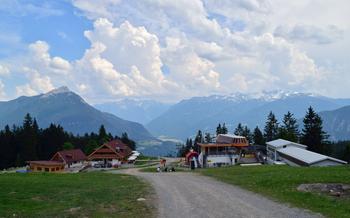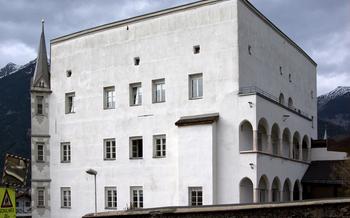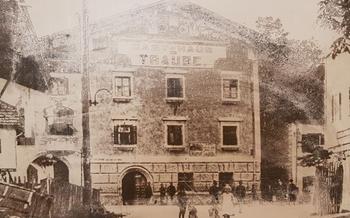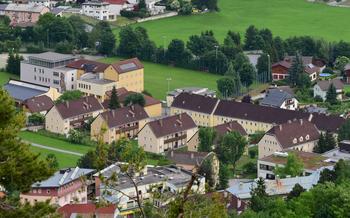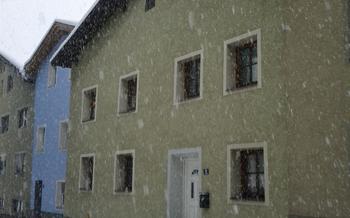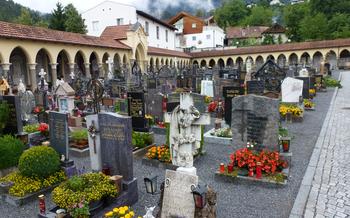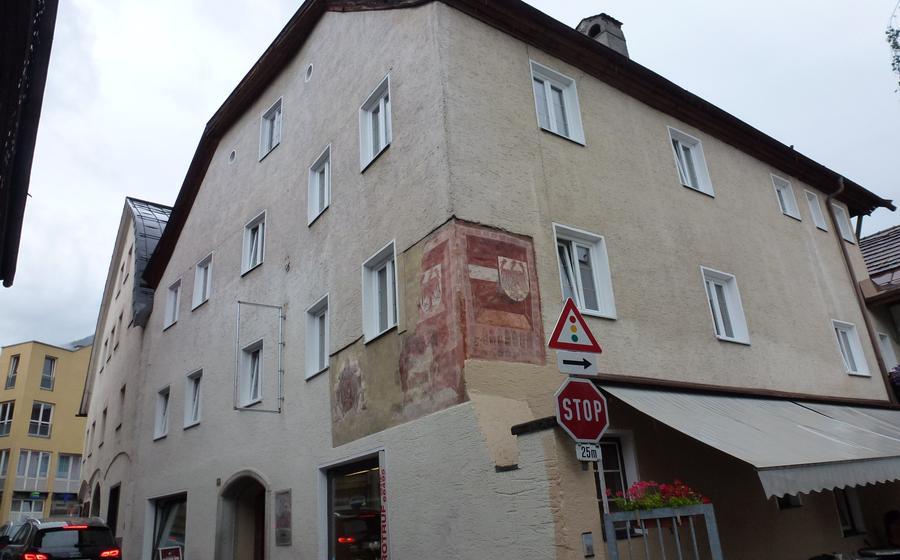
Wildspitze Mountain
- Imst: A Gateway to Alpine Adventures
- Wildspitze: Austria's Highest Peak
- Route Planning and Logistics
- Acclimatization and Training: Preparing for High-Altitude Success
- Planning for Accommodation and Meals
- Exploring the Region: Beyond Wildspitze
- Respecting the Environment
- Local Customs and Etiquette
- Insider Tip: Off-the-Beaten-Path Gems
Imst: A Gateway to Alpine Adventures
Imst, nestled in the heart of Tyrol, Austria, is a picturesque town that serves as a gateway to the breathtaking Ötztal Alps, home to Austria's highest peak, the majestic Wildspitze. With its stunning natural beauty and proximity to some of the most challenging and rewarding mountaineering terrain in the Alps, Imst has earned a reputation as a hub for outdoor enthusiasts and adventure seekers from around the world. Whether you're an experienced mountaineer looking to conquer the mighty Wildspitze or a nature lover seeking tranquility amidst alpine landscapes, Imst offers an unforgettable experience for every traveler.
Wildspitze: Austria's Highest Peak
Wildspitze stands as a majestic symbol of Austria's alpine grandeur, towering over the Ötztal Alps as the country's highest peak. With an elevation of 3,768 meters (12,362 feet) and a prominence of 2,261 meters (7,418 feet), Wildspitze commands respect and admiration among mountaineers worldwide. Its position within the Ötztal Alps makes it a central figure in the region's stunning mountain scenery, attracting climbers from across the globe who seek to conquer its challenging slopes. Whether viewed from afar or experienced firsthand, Wildspitze embodies the essence of alpine adventure and beckons mountaineers to embark on a journey to its summit.
Route Planning and Logistics
Before embarking on your Wildspitze adventure, careful planning is essential. The starting points for different routes vary depending on your skill level and preferences. One popular option is the Taschachhaus (2,434 m), which is accessible by car or public transportation. From here, you can follow the Taschachferner Glacier to reach the summit. Another starting point is the Vernagt Hut (2,755 m), which offers a more challenging route via the Vernagtferner Glacier.
The duration of the climb can range from 8 to 12 hours, depending on your fitness level and the route you choose. Be prepared for a physically demanding journey that requires endurance and determination. Along the way, you'll encounter steep slopes, exposed sections, and potentially challenging weather conditions.
To ensure a safe and enjoyable climb, plan your route carefully and consider your fitness level and experience. Mountain huts are available along the way, providing shelter, refreshments, and a place to rest before continuing your ascent. These huts are typically staffed by experienced mountaineers who can offer guidance and assistance if needed.
Acclimatization and Training: Preparing for High-Altitude Success
When embarking on a high-altitude mountaineering expedition, acclimatization is crucial for ensuring a safe and successful ascent. This process involves gradually exposing your body to higher elevations over time, allowing it to adapt to the decreasing oxygen levels and reducing the risk of altitude sickness.
Before attempting to summit Wildspitze, it's highly recommended to spend a few days at higher altitudes to allow your body to adjust. This can be achieved by hiking or staying in mountain huts at progressively higher elevations. This acclimatization period helps your body produce more red blood cells, which carry oxygen throughout the bloodstream, and also allows your heart and lungs to adapt to the reduced oxygen levels.
In addition to acclimatization, proper training and conditioning are essential for preparing for the physical demands of climbing Wildspitze. Regular cardiovascular exercise, such as running or cycling, will help strengthen your heart and lungs. Incorporate strength training exercises to build muscle strength and endurance, especially in your legs, core, and upper body. Flexibility training, including stretching and yoga, will improve your range of motion and reduce the risk of injuries.
By following a comprehensive acclimatization and training plan, you can significantly reduce the risk of altitude sickness and increase your chances of a successful and enjoyable ascent of Wildspitze.
Planning for Accommodation and Meals
Before embarking on your Wildspitze adventure, it's essential to plan for accommodation and meals to ensure a comfortable and well-nourished journey. Imst offers a range of accommodation options to suit various budgets and preferences. From cozy guesthouses and traditional Tyrolean inns to modern hotels, there's something for every traveler. To secure your preferred accommodation, especially during the peak season, booking in advance is highly recommended.
For those seeking a more immersive experience, mountain huts offer a unique opportunity to stay amidst the stunning alpine scenery. These huts provide basic accommodation, meals, and a chance to interact with fellow mountaineers and share stories of their adventures. However, it's crucial to book hut reservations well in advance, as they tend to fill up quickly.
Regarding meals, Imst and the surrounding region offer a variety of dining options. From traditional Tyrolean cuisine to international fare, there's something to satisfy every palate. Local restaurants serve hearty and delicious dishes, often featuring fresh, locally sourced ingredients. For those who prefer to prepare their own meals, grocery stores in Imst offer a wide selection of supplies.
Exploring the Region: Beyond Wildspitze
While Wildspitze is undoubtedly a highlight of the Ötztal Valley, the region offers a wealth of other attractions and activities to explore. Adventure enthusiasts can embark on challenging hikes through the picturesque landscapes, with trails ranging from gentle walks to strenuous climbs. The Ötztal Alps are also a paradise for mountain bikers, with a network of well-maintained trails catering to all skill levels.
Beyond the natural wonders, the region is steeped in history and culture. Visitors can delve into the past at fascinating museums, explore historic villages, and learn about local traditions. The Ötztal Valley is also renowned for its culinary delights, with traditional Tyrolean cuisine showcasing the region's fresh produce and Alpine flavors.
For those seeking a relaxing retreat, the region offers a range of wellness options. Thermal baths, saunas, and spa treatments are available in many towns, providing a chance to rejuvenate and unwind after a day of mountain adventures.
To make the most of your time in the Ötztal Valley, consider exploring some of the hidden gems and lesser-known attractions. Venture off the beaten path to discover tranquil mountain lakes, charming villages, and secluded hiking trails. Immerse yourself in the local culture by attending traditional festivals, visiting local markets, and interacting with the friendly residents.
Whether you're seeking adrenaline-pumping adventures, cultural immersion, or simply a chance to relax and recharge, the Ötztal Valley and the surrounding region offer something for everyone.
Respecting the Environment
As responsible travelers, it's crucial to minimize our impact on the pristine alpine environment of Imst and the Ötztal Valley. Follow designated trails to avoid damaging fragile vegetation and wildlife habitats. Refrain from littering and dispose of waste properly in designated bins. Embrace the principles of "Leave No Trace" by leaving the natural surroundings as you found them. Support local conservation efforts by choosing eco-friendly accommodation and transportation options. Respect the delicate balance of the alpine ecosystem, and together, we can preserve its beauty for future generations to enjoy.
Local Customs and Etiquette
Understanding and respecting local customs and etiquette is essential for a positive and enriching travel experience in Imst and the surrounding region. Here are a few tips to help you interact respectfully with the community:
-
Greetings and Communication: When greeting locals, a friendly "Grüß Gott" (meaning "God greet you") is the traditional salutation. A firm handshake is customary when meeting someone for the first time.
-
Mountain Etiquette: When hiking or climbing in the mountains, be considerate of other hikers and wildlife. Greet fellow hikers with a friendly "Grüß Gott" and give way to those coming downhill. Keep noise levels low to minimize disturbance to wildlife.
-
Mountain Huts: Mountain huts in the Alps are often run by families who have a deep connection to the mountains. Be respectful of their property and follow their rules. It's customary to remove your shoes before entering a hut and to greet the hut keeper with a friendly "Grüß Gott."
-
Language: German is the official language of Austria, and while many locals in tourist areas speak English, learning a few basic German phrases can go a long way in showing respect for the local culture.
-
Tipping: Tipping is customary in Austria, with a standard tip of 5-10% for good service in restaurants and cafes. It's also appropriate to leave a small tip for services such as taxi rides or guided tours.
Insider Tip: Off-the-Beaten-Path Gems
Beyond the iconic Wildspitze, the Ötztal Valley and the surrounding region offer a treasure trove of hidden gems waiting to be discovered by adventurous travelers. For those seeking a more intimate and authentic experience, here are a few insider tips:
-
Lake Piburg: Nestled in a secluded valley, Lake Piburg is a stunning alpine lake with crystal-clear waters and breathtaking mountain views. Take a leisurely stroll along its shores, enjoy a refreshing swim, or simply relax and soak in the tranquil atmosphere.
-
Alpine Pastures: Experience the traditional Tyrolean way of life by visiting one of the many alpine pastures in the region. Meet the local farmers, learn about their cheese-making process, and sample some of their delicious products. You can also enjoy a hearty meal at one of the rustic mountain huts and immerse yourself in the region's rich culinary heritage.
-
Cultural Gems: Step back in time and explore the region's rich history and traditions by visiting its many cultural attractions. The Ötztal Museum in Längenfeld showcases the valley's history and culture, from its prehistoric roots to the present day. The Aqua Dome, a thermal spa complex, offers a unique blend of history and wellness, featuring ancient Roman-style baths and modern spa facilities.
-
Secret Hiking Trails: Discover the region's hidden hiking trails that lead to secluded valleys, cascading waterfalls, and panoramic viewpoints. Ask locals for recommendations or do some research online to find trails that are less frequented by tourists. These hidden gems offer a chance to experience the region's natural beauty in peace and tranquility.
-
Off-Season Adventures: Avoid the crowds and enjoy a more personal experience by visiting the region during the shoulder seasons (spring and autumn). The weather is still pleasant, and you'll have the trails and attractions all to yourself. Plus, you'll find better deals on accommodation and other services.


